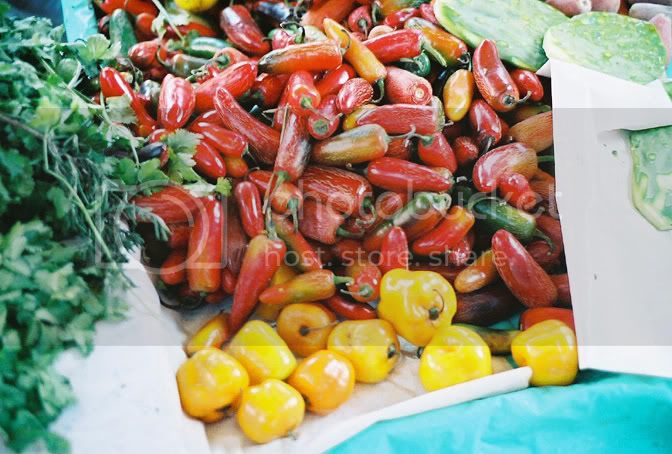-
Do you need help identifying a 🌶️?
Is your plant suffering from an unknown issue? 🤧
Then ask in Identification and Diagnosis.
You are using an out of date browser. It may not display this or other websites correctly.
You should upgrade or use an alternative browser.
You should upgrade or use an alternative browser.
pubescens pubescent
- Thread starter habman
- Start date
That's a good question, one that I can not answer. But I have heard of them having a very large range of heat.
pubescens ROCK!! They are one of best species of peppers in my opinion thick walled and HOT with a great taste. I will be growing at lest 15 varieties of pubes next year. If you need seeds Pm me I have lots of rocoto orange seeds to share
macmanmatty
macmanmatty
Just started growing rocotos this year. Fantastic pepper. I wish I could find more.
I have some PI 614001 and CAP 487 C. Pubescenses from last years plants. Send your trade list if you want to trade.
After more research, I think I figured out why pubescens are not popular.
1) Pubescens do not cross whith frutescens, chinense ... making them a less diverse group
2) seeds are hard and must be removed before processing/eating the pepper. For commercial uses ( chili sauces ) the seeds need to be removed making it more expensive.
3) Difficult to grow
Most of them have a very nice apple round shape.
IMHO I think they are the best looking peppers. They look so yummy!
1) Pubescens do not cross whith frutescens, chinense ... making them a less diverse group
2) seeds are hard and must be removed before processing/eating the pepper. For commercial uses ( chili sauces ) the seeds need to be removed making it more expensive.
3) Difficult to grow
Most of them have a very nice apple round shape.
IMHO I think they are the best looking peppers. They look so yummy!
Pod pics
I don't know what this C. Pubescens is:

Besides having a little frost damage. But this is CAP 487 (red), and PI 614001(orange).

I don't know what this C. Pubescens is:

Besides having a little frost damage. But this is CAP 487 (red), and PI 614001(orange).

OH! ABurningMouth uses a Mac! Wohoo!!!
macmanmatty said:pubescens ROCK!! They are one of best species of peppers in my opinion macmanmatty
I'll second that opinion. Not only are these plants more cold tolerent than the other domesticated species (ie Annuums, Frutescens, Chinense & Bacatuum's), the posa are fantastic and the flowers are second to none.
However I disagree with the comment the are more difficult to grow, thats not correct. They are much easy than some of the Chinense species I have tried.
I did a piece a few months back on the baccatuum species in the chileman 2006 journal. Check out this link and scroll down to 'Magical Manzano'
http://thechileman.blogspot.com/
ALso check out some of the pubescens flower images from the chileman database here:
http://www.thechileman.org/results....=Any&origin=Any&genus=Pubescens&submit=Search
The two best known Pubescens are rocoto and manzano.
The Rocoto is probably the most famous of the two more common Pubescens species, its history lies in the Andes region of Peru where it is also known as 'Manzano', meaning apple due the shape of the fruit. It is also called Locoto in Bolivia, Chilli Peron, Chilli Caballo and Chilli Ciruelo. The most distinguishing feature of these peppers are their black seeds. The peppers themselves are very pungent, approx 2in long and 1 1/2in wide and resemble miniture bell peppers and this variety matures in colour from green to yellow. Rocotos can be a slow to germinate, so be sure to keep the soil temperature above 75F, although once mature these plants are very resistant to low temperatures. Rocotos are at their best when eaten fresh and should be left on the plant until needed.
Manzano means 'apple' which describes the appearence of the fruits - like small apples. Like its cousin the Rocoto, this variety has unusual black seeds which are very hard (like apple pips) and should be removed before eating. Manzano comes generally in three types, Amarillo, Rojo (Red) and Canario (Yellow). Also known as 'Caballo' in Guatemala.
Ive been lucky enough to get my hands on seed for about 20 different Pubescens species. Im planning a grow out next year and will report back (as always)
Mark
Hi Mark
lovely they are!! Grew 14 vars of pubescens this year and still have a lot of ripe chiles on the plants outside even now.
They are pretty easy to grow, as you say, just a little long to mature and suffer when it gets really hot...even so they preduce quite well for me, even though these plants seemingly produce much better in subsequent years, if you can overwinter them.
I think the rocotos are just great fresh, but if you have access to a decent dehydrater (the thick walls of these pods being difficult to dry otherwise)they make some fanatastic powders.
Good luck with yours in 2007.
Guy
lovely they are!! Grew 14 vars of pubescens this year and still have a lot of ripe chiles on the plants outside even now.
They are pretty easy to grow, as you say, just a little long to mature and suffer when it gets really hot...even so they preduce quite well for me, even though these plants seemingly produce much better in subsequent years, if you can overwinter them.
I think the rocotos are just great fresh, but if you have access to a decent dehydrater (the thick walls of these pods being difficult to dry otherwise)they make some fanatastic powders.
Good luck with yours in 2007.
Guy
Hi Habman
Most of mine were up in 7 to 10 days, using heating cables at a temp of 30°C.
Guy
Most of mine were up in 7 to 10 days, using heating cables at a temp of 30°C.
Guy
Capsicum pubescens is really GREAT !
Great Heat and tastful HMMMM !
rocoto relleno ist one of my favorite way to consume them
I had this Year Around 150 C.pubescens Plants
30 vars
For 2007 I want to specialize in Capsicum pubescens and am still looking for more vars so if anybody has any Intersting vars please cantact me
Greetings From Germany
Hombre
Great Heat and tastful HMMMM !
rocoto relleno ist one of my favorite way to consume them
I had this Year Around 150 C.pubescens Plants
30 vars
For 2007 I want to specialize in Capsicum pubescens and am still looking for more vars so if anybody has any Intersting vars please cantact me
Greetings From Germany
Hombre
habman said:These peppers should do real well in canada. Maybe I'll be able to get a few extra weeks of growing
Hey habman,
Even in Canada the pubescens don't like the intense summer heat. Mine produced flowers/fruit only in late spring and then again in late fall during cooler periods. These plants can get really tall and branchy too, not so good for indoor growing.
Can somebody recomend a good variety for taste. The ones I grew lacked in taste and only seemed to have heat in the bottom half of the peppers?? and they came from a very unreliable source. Beautiful flowers though.

